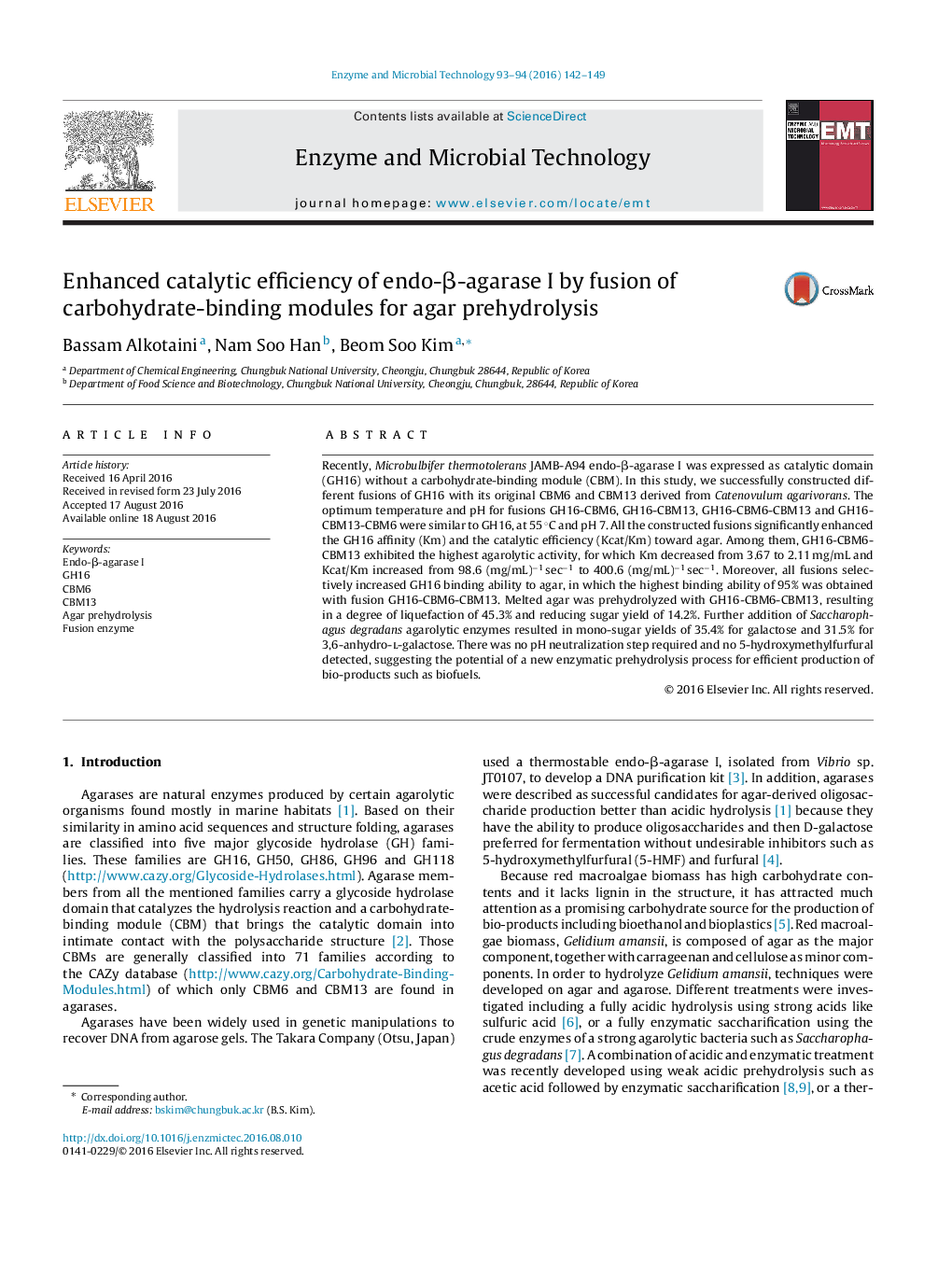| Article ID | Journal | Published Year | Pages | File Type |
|---|---|---|---|---|
| 6488221 | Enzyme and Microbial Technology | 2016 | 8 Pages |
Abstract
Recently, Microbulbifer thermotolerans JAMB-A94 endo-β-agarase I was expressed as catalytic domain (GH16) without a carbohydrate-binding module (CBM). In this study, we successfully constructed different fusions of GH16 with its original CBM6 and CBM13 derived from Catenovulum agarivorans. The optimum temperature and pH for fusions GH16-CBM6, GH16-CBM13, GH16-CBM6-CBM13 and GH16-CBM13-CBM6 were similar to GH16, at 55 °C and pH 7. All the constructed fusions significantly enhanced the GH16 affinity (Km) and the catalytic efficiency (Kcat/Km) toward agar. Among them, GH16-CBM6-CBM13 exhibited the highest agarolytic activity, for which Km decreased from 3.67 to 2.11 mg/mL and Kcat/Km increased from 98.6 (mg/mL)⿿1 sec⿿1 to 400.6 (mg/mL)⿿1 sec⿿1. Moreover, all fusions selectively increased GH16 binding ability to agar, in which the highest binding ability of 95% was obtained with fusion GH16-CBM6-CBM13. Melted agar was prehydrolyzed with GH16-CBM6-CBM13, resulting in a degree of liquefaction of 45.3% and reducing sugar yield of 14.2%. Further addition of Saccharophagus degradans agarolytic enzymes resulted in mono-sugar yields of 35.4% for galactose and 31.5% for 3,6-anhydro-l-galactose. There was no pH neutralization step required and no 5-hydroxymethylfurfural detected, suggesting the potential of a new enzymatic prehydrolysis process for efficient production of bio-products such as biofuels.
Keywords
Related Topics
Physical Sciences and Engineering
Chemical Engineering
Bioengineering
Authors
Bassam Alkotaini, Nam Soo Han, Beom Soo Kim,
